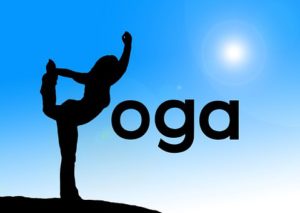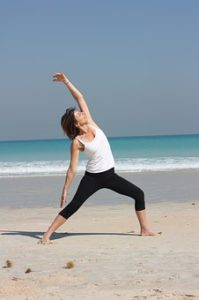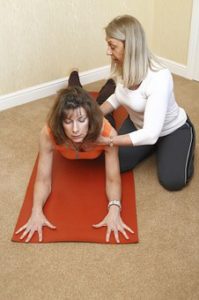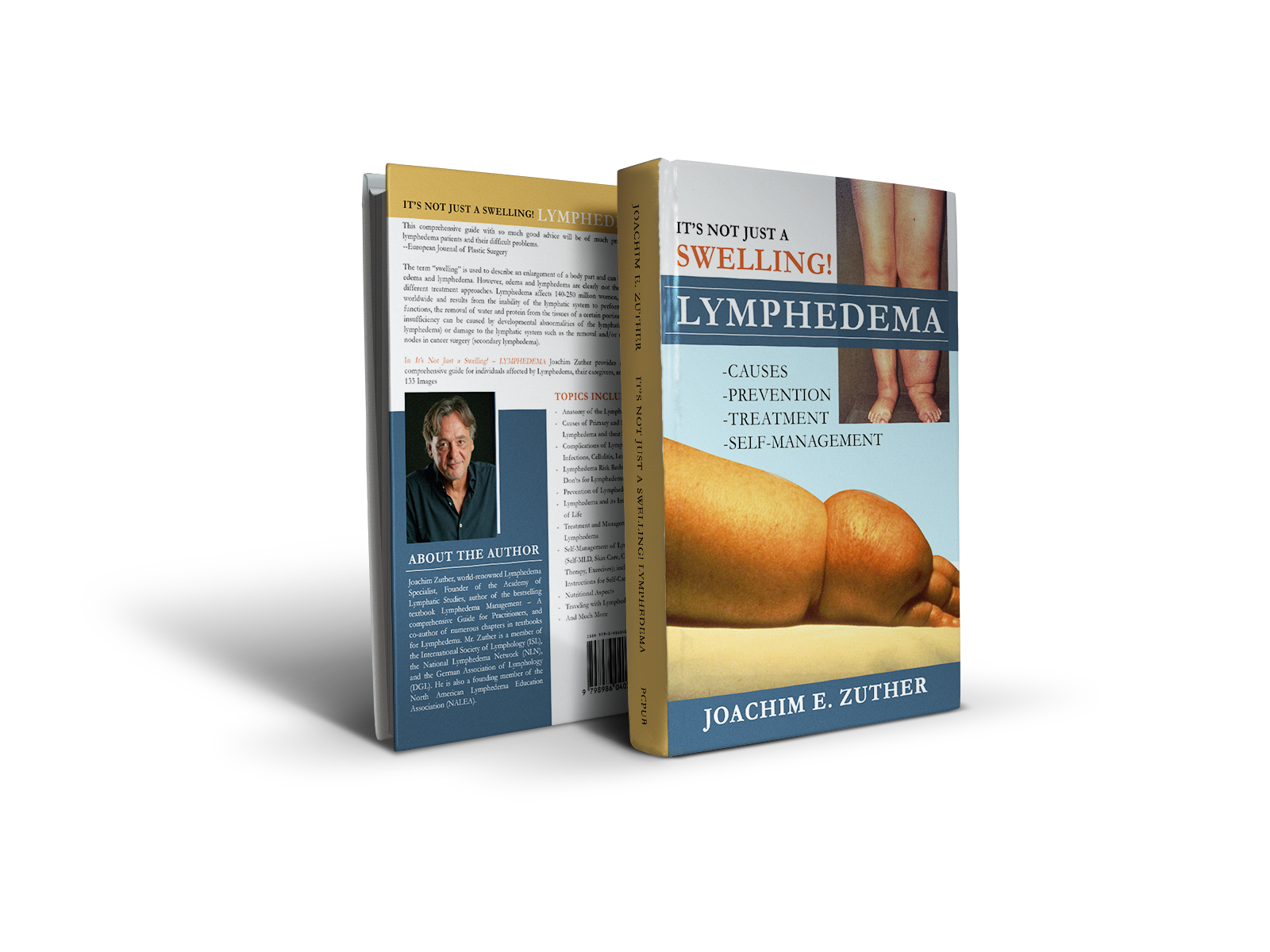The 2016 Yoga in America Study conducted by Yoga Journal and Yoga Alliance shows that the number of yoga practitioners in the United States has increased to more than 36 million, up from 20.4 million in 2012. Yoga, a practice rooted in over 5000 years of ancient Indian texts and traditions, continues to gain popularity in the U.S. In addition, nine out of 10 Americans have heard of yoga, one in three Americans has tried yoga at least once, and more than 15% of Americans have practiced yoga in the last six months. Several studies indicate that yoga is a beneficial and potentially safe exercise, combining a number of effects that can have a positive impact on individuals affected by lymphedema.

The swelling in lymphedema is caused by an abnormal accumulation of protein and water in the tissue and results from the inability of the lymphatic system to perform one of its basic functions, the removal of water and protein from the tissues of a certain portion of the body. This insufficiency can be caused by developmental abnormalities of the lymphatic system (primary lymphedema), or damage to the lymphatic system, such as the removal and/or radiation of lymph nodes in cancer surgery, or infection of the lymphatic system (secondary lymphedema). The accumulation of lymphatic fluid results in abnormal swelling, most commonly affecting the upper and lower extremities. However, other parts of the body may be affected as well.
The lymphatic system consists of lymph vessels and lymph nodes (and other structures) throughout the body. Lymph vessels collect lymphatic fluid, which is composed of protein, water, fats, and waste products from cells. These vessels transport the fluid to the lymph nodes, where waste products and foreign materials are filtered out from the fluid. After passing several groups of lymph nodes, the lymph vessels return the filtered fluid back to the blood.
In order to reduce the swelling, it is necessary to re-route the lymph flow – to include excess protein and water molecules – around the blocked area(s) into more centrally located healthy lymph vessels. This goal is achieved by a combination of different treatment modalities, manual lymph drainage (MLD), compression therapy, decongestive and breathing exercises and skin and nail care, all of which are integral components of complete decongestive therapy (CDT), the internationally recognized “gold standard” treatment system for the vast majority of patients affected by lymphedema.
CDT is performed in two phases; in phase one, also known as the intensive or decongestive phase, treatments are administered by trained lymphedema therapists on a daily basis until the affected body part is decongested. The end of phase one is reached when the measurements, which are taken by the therapist, approach a plateau. The patient then progresses seamlessly into phase two of CDT, also known as the self-management phase, in which the patient assumes responsibility for maintaining and improving the treatment results achieved in phase one. Lymphedema is a chronic condition, and no cure is currently available; therefore, this condition must be managed for the remaining life span of the affected patient.
During the intensive phase patients are instructed by the therapist in the individual components of self-management, which include self-manual lymph drainage (self MLD, or simple MLD), abdominal breathing techniques, a skin care regimen, home exercises, and the application of compression garments (and bandages).
The positive impact a well-exercised self-management program can have on maintaining and improving the treatment results achieved in the intensive phase are well known. Additional benefits include improvement of general well-being, minimizing the negative impact on quality of life, supporting a healthy lifestyle, improving self-image, as well as stress and weight management.
Another important aspect in self-management for lymphedema is to identify other easily accessible activities that are beneficial and can be performed by the patient independently.
 Several studies (1,2) indicate that the benefits of yoga can have positive effects for those affected by lymphedema. Yoga can be easily adapted to the individual’s particular health status, abilities and limitations, and therefore may be preferable to more strenuous forms of exercise for some patients. In addition to increasing flexibility, muscle strength and range of motion, yoga beneficially impacts (diaphragmatic) breathing and increases venous and lymphatic circulation, both important aspects in the management of lymphedema.
Several studies (1,2) indicate that the benefits of yoga can have positive effects for those affected by lymphedema. Yoga can be easily adapted to the individual’s particular health status, abilities and limitations, and therefore may be preferable to more strenuous forms of exercise for some patients. In addition to increasing flexibility, muscle strength and range of motion, yoga beneficially impacts (diaphragmatic) breathing and increases venous and lymphatic circulation, both important aspects in the management of lymphedema.
The downward and upward movement of the diaphragm in deep abdominal breathing is an essential component for the sufficient return of lymphatic fluid back to the bloodstream; movement of the diaphragm, combined with the outward and inward movements of the abdomen, rib cage, and lower back, also promotes general well-being, relaxation, peristalsis and return of venous blood back to the heart. The controlled yoga breathing exercises promote lymph flow by strengthening the diaphragm and its movement. Resting and paying attention to the breath between yoga poses helps the body to relax from the previous pose and prepare for the next pose without strain.
 There are many different forms of yoga; some are fast-paced and intense, others are gentle and relaxing. The intensity level varies with the type – in other words, the intensity of a workout depends on which form of yoga is chosen. Techniques like “Hatha” and “Iyengar” yoga are gentle and slow; “Bikram”, “Hot” and “Power” yoga are faster, more challenging techniques and should be avoided by those affected by lymphedema. More advanced poses, and most of the inverted poses should be avoided as well – including headstand (too much weight on the arms and neck), shoulder stand (too much weight and pressure on the neck and shoulders), and downward facing dog (too much weight on the arms).
There are many different forms of yoga; some are fast-paced and intense, others are gentle and relaxing. The intensity level varies with the type – in other words, the intensity of a workout depends on which form of yoga is chosen. Techniques like “Hatha” and “Iyengar” yoga are gentle and slow; “Bikram”, “Hot” and “Power” yoga are faster, more challenging techniques and should be avoided by those affected by lymphedema. More advanced poses, and most of the inverted poses should be avoided as well – including headstand (too much weight on the arms and neck), shoulder stand (too much weight and pressure on the neck and shoulders), and downward facing dog (too much weight on the arms).
The gentler forms of yoga combined with breathing exercises are certainly preferable.
Examples of different yoga forms include:
- Hatha: This form is most often associated with yoga and is one of the most popular styles; it combines a series of most of the basic movements (Asanas) of yoga and focuses on breath-controlled exercises (Pranayama). The breathing exercises are followed by a series of yoga postures, which are generally held longer than in other yoga variations and end with a resting period. The traditional poses may need to be adapted to the individual’s capabilities. In a class situation patients should ask the instructor to modify the pose if necessary; patients exercising on their own with a book or DVD may try going into the pose only half-way or skipping it altogether. Simple lateral and twisting poses, along with basic forward and backward bending poses are most recommended for lymphedema yoga.
Most yoga classes taught in the West are different variations of Hatha yoga. - Iyengar: Iyengar is a very meticulous style of yoga, with great attention paid to finding the proper alignment in a pose. In a typical Iyengar class, poses are held much longer than in other forms of yoga. Typical for this form of yoga is the use of props, such as blocks, belts, bolsters, chairs and blankets to assist the body to move into the proper alignment and accommodate any limitation, injuries, tightness or structural imbalances the participant may have.
- Vinyasa: This is also a very popular style of yoga practice, which involves synchronizing the breath with a continuous performance of a series of postures that flow smoothly into one another. Vinyasa classes are known for their fluid, movement-intensive practices. Vinyasa instructors arrange their classes to smoothly transition from pose to pose, and often play music to keep things lively. The intensity of the practice is similar to Ashtanga.
- Ashtanga: This form is a more challenging, physically demanding variation of yoga that follows a specific – typically fast-paced – sequence of a series of postures, all of which are linked to breath. Ashtanga is similar to Vinyasa yoga, as each style links every movement to a breath. The difference is that Ashtanga always performs the exact same poses in the exact same order.
- Power Yoga: A faster, higher-intensity practice, which is more fitness based. In addition to other benefits of yoga, this variation builds muscular strength and increases stamina, but is physically very demanding.
- Bikram: This form is also known as “hot yoga,” and consists of a copyrighted series of 26 challenging poses performed in a room heated to 104 degrees Fahrenheit (40 degrees Celsius) with a humidity of 40%. Bikram class always follows the same sequence, and classes run over a period of 90 minutes. This form of yoga is highly challenging both physically and mentally.
- Hot Yoga: This form of yoga is very similar to Bikram. The main differences include: temperature (the room is generally heated to about 80-100 degrees Fahrenheit); yoga postures vary within different classes and are not restricted to 26 poses; the duration of a class is typically 60 (vs. 90) minutes.
 The universal caution for any exercise “don’t strain” is crucial for those concerned with the goal of preventing the onset, and those affected by lymphedema. The main focus for those who consider the practice of yoga should be on increasing lymph flow through postures and breathing, stress and pain relief, increased flexibility and strength, improved balance and well-being.
The universal caution for any exercise “don’t strain” is crucial for those concerned with the goal of preventing the onset, and those affected by lymphedema. The main focus for those who consider the practice of yoga should be on increasing lymph flow through postures and breathing, stress and pain relief, increased flexibility and strength, improved balance and well-being.
It is evident that the most appropriate variations of yoga for lymphedema patients include Hatha, Iyengar and moderate variations of Vinyasa. These forms are gentle, relatively simple, focus on breathing and are still physically challenging but not overwhelming. Additional benefits of yoga include weight management, improved strength, cardiovascular conditioning (lowering blood pressure and resting heart rate, increasing endurance and improving oxygen uptake during exercise), inner calm, support of a healthy lifestyle and encouragement to self-care.
Individuals who have lymphedema should always wear their compression garments or bandages during yoga exercises in order to support and increase lymphatic and venous return. Should any ache develop during yoga exercises it is recommended that patients take a rest, elevate the arm or leg, and focus on breathing exercises.
Beneficial yoga poses for lymphedema: (by clicking this link, you can review instruction and images of the first three poses on a webpage):
Elevated legs up the wall: This exercise is performed laying on back on the floor and raising your legs up against a wall. While sitting, bring one side of your body close to a wall. Swivel your legs up the wall and lay your upper body on the floor. Lift your buttocks up off the floor a few inches and place a blanket or bolster under your tailbone.
Half standing forward bend: While standing with your feet hip width apart, bend your body forward to a horizontal position while stretching your hands out in front of you. Another option is to place your hands on a chair or a table with your stretched out arms; the hands rest on the chair or the table.
Simple hand movements: Can be performed sitting in a chair or cross-legged on the floor. Arms are raised (ideally holding a band) over the head while inhaling. The arms are lowered (or extended behind the head) while exhaling.
Cat – cow pose, and modifications of this pose: Click here for instructions and images for this pose
Videos: There are some yoga exercises on mediums, such as YouTube – remember, the demonstrated poses may need to be adapted to your capabilities.
Following are a few examples (please feel free to leave a link in the comment section should you find another beneficial video online):
Yoga for lymphedema of the arm (easy to follow elevating and side-bending poses)
General yoga exercises for lymphedema:
Mostly torso bending sitting on the floor
Arm exercises sitting on a chair
Standing yoga exercises for the entire body
Dear Lymphedema Blog Reader – if you like the contents on this website, please help to keep it going. A great amount of work and research is necessary to provide you with up-to-date information on this site. Your donation supports these efforts and associated administrative costs. Surplus funds will be donated to Lymphedema/Lipedema-related charitable endeavors. Please donate using the “Donate Now” button on the right upper hand of this page – Thank You!
Join Lymphedema Guru, a Facebook page solely dedicated to inform about all things related to lymphedema – news, support groups, treatment centers, and much more
References:
Additional Reading:
https://www.ncbi.nlm.nih.gov/pmc/articles/PMC4959325/
http://www.woundsinternational.com/media/issues/916/files/content_11238.pdf
https://breastcanceryogablog.com/tag/yoga-for-lymphedema/
http://www.findhomeremedy.com/5-most-effectiveyoga-exercises-for-lymphedema/


 Joachim Zuther, Lymphedema Specialist.
Joachim Zuther, Lymphedema Specialist. 

Great article! While watching Youtube videos and dvds are wonderful to practice with, if you are in need of modifications, please consult with a certified/registered yoga teacher who has received thorough training with those affected by lymphedema.